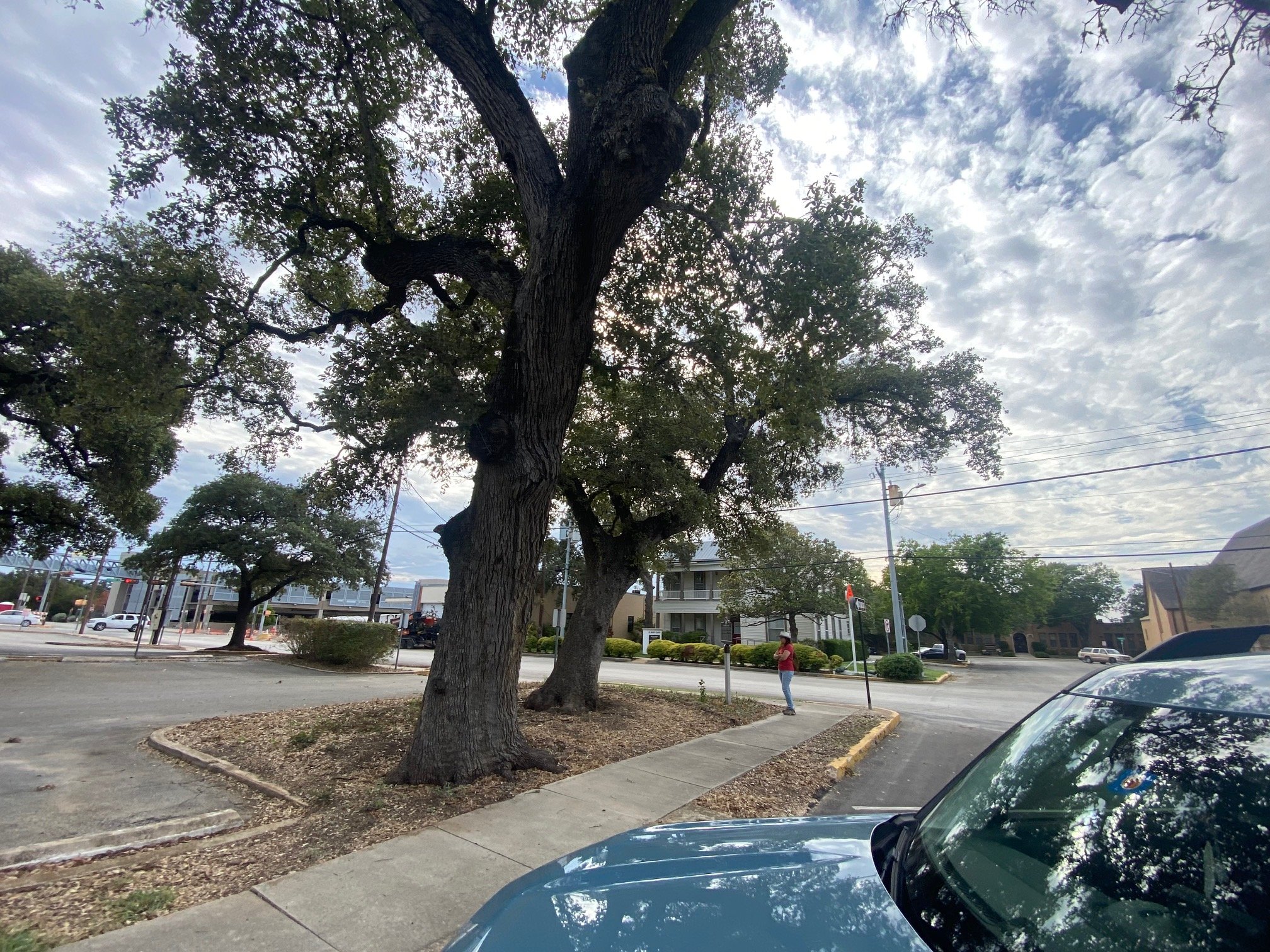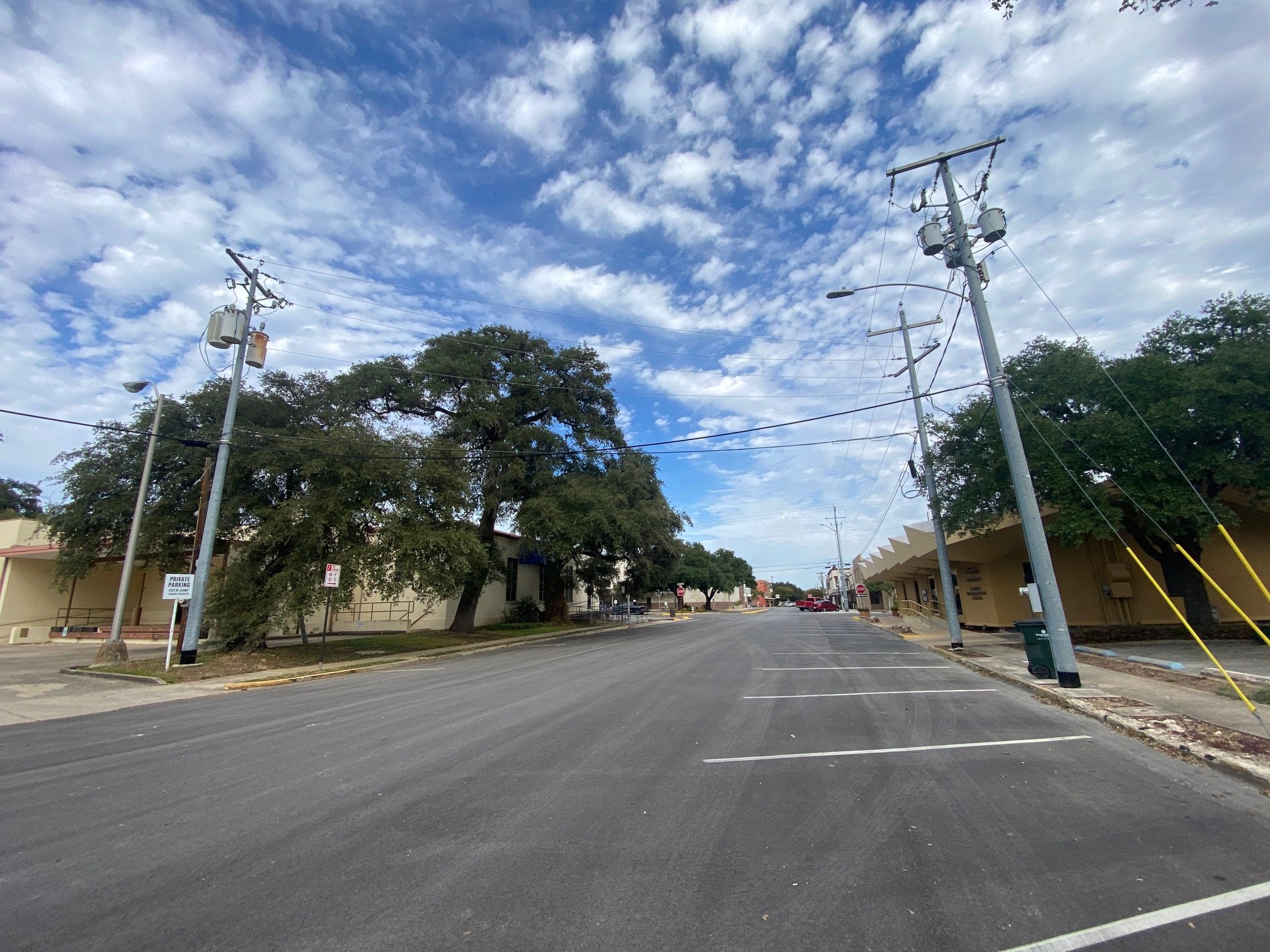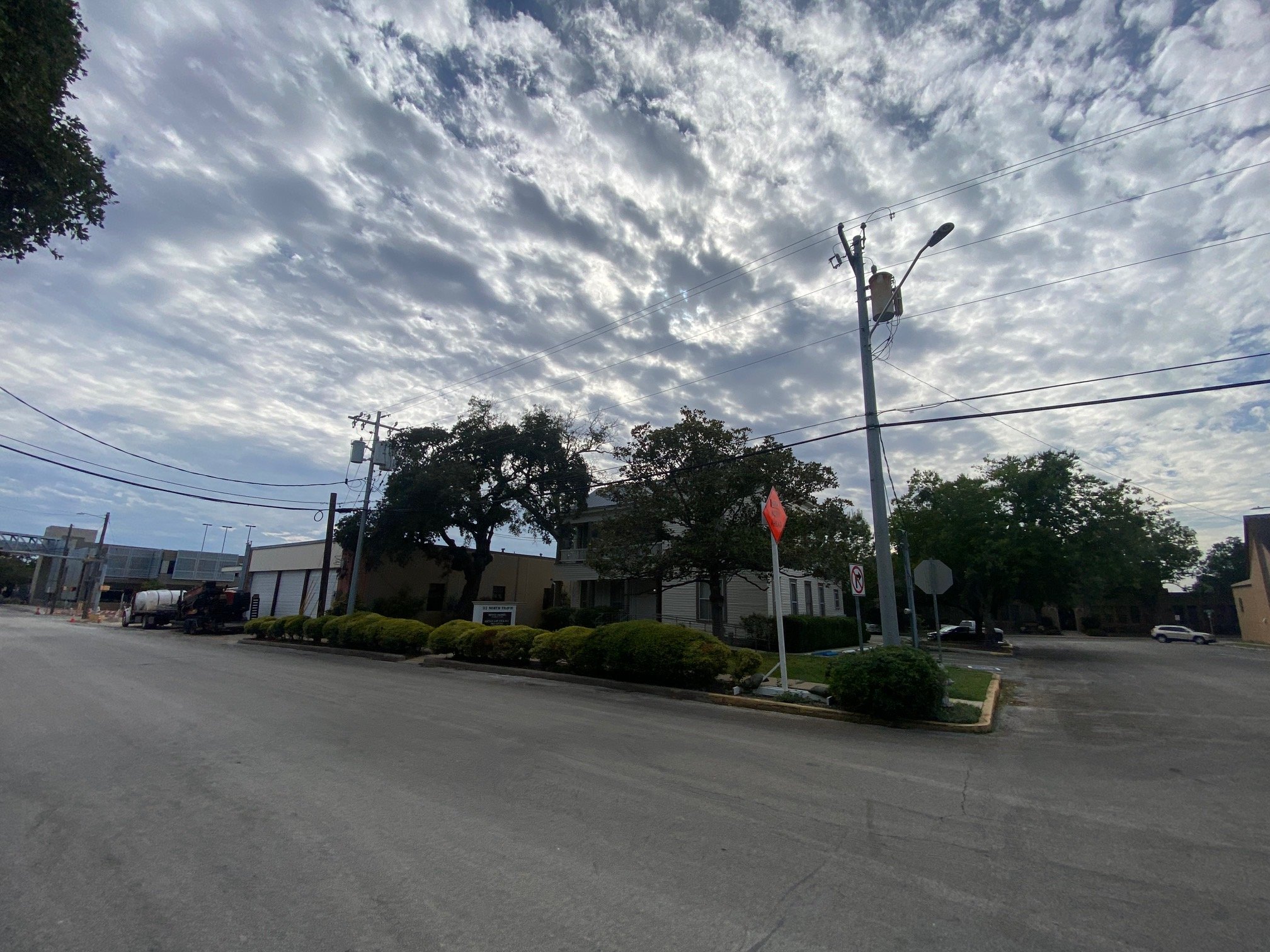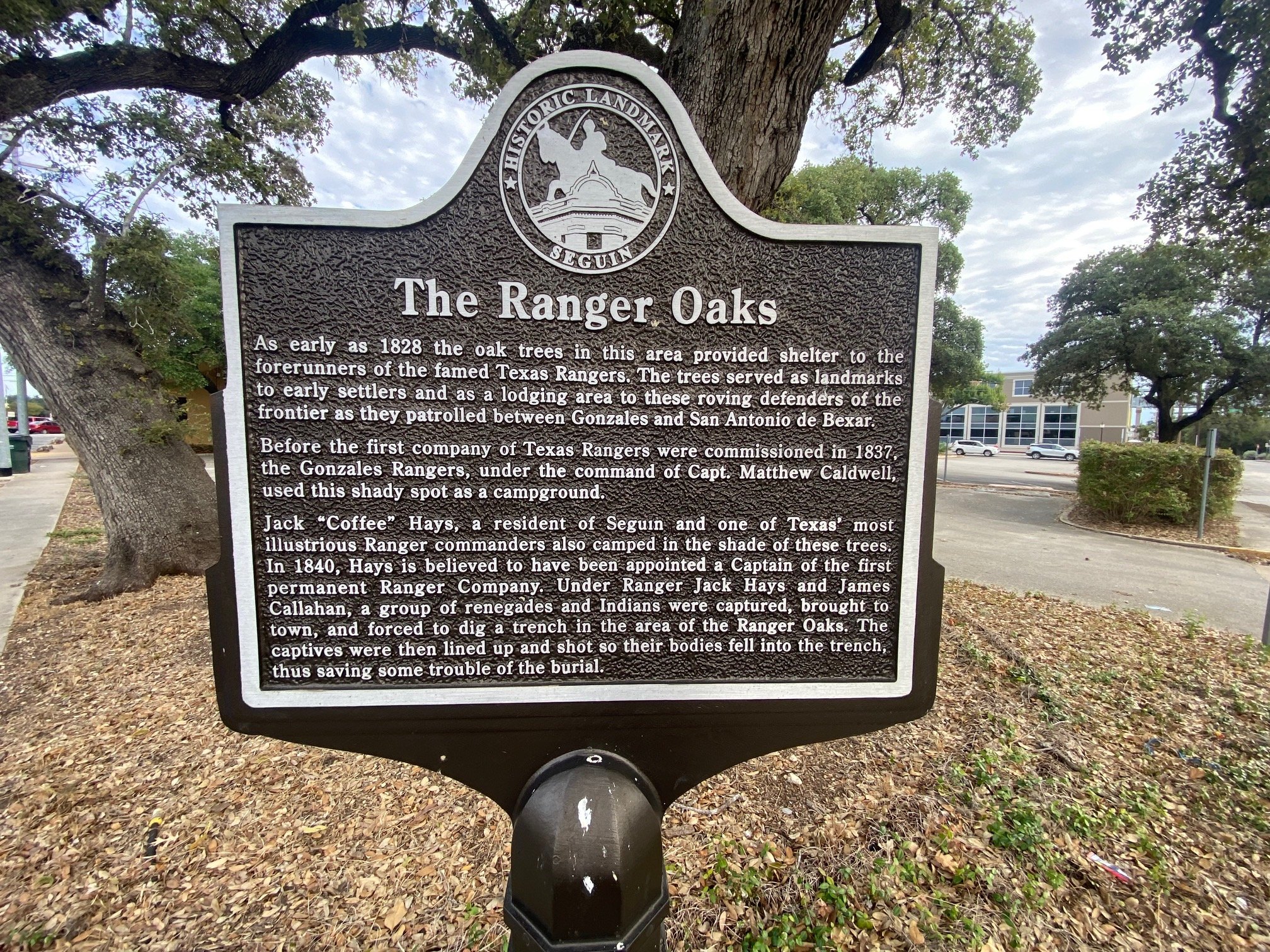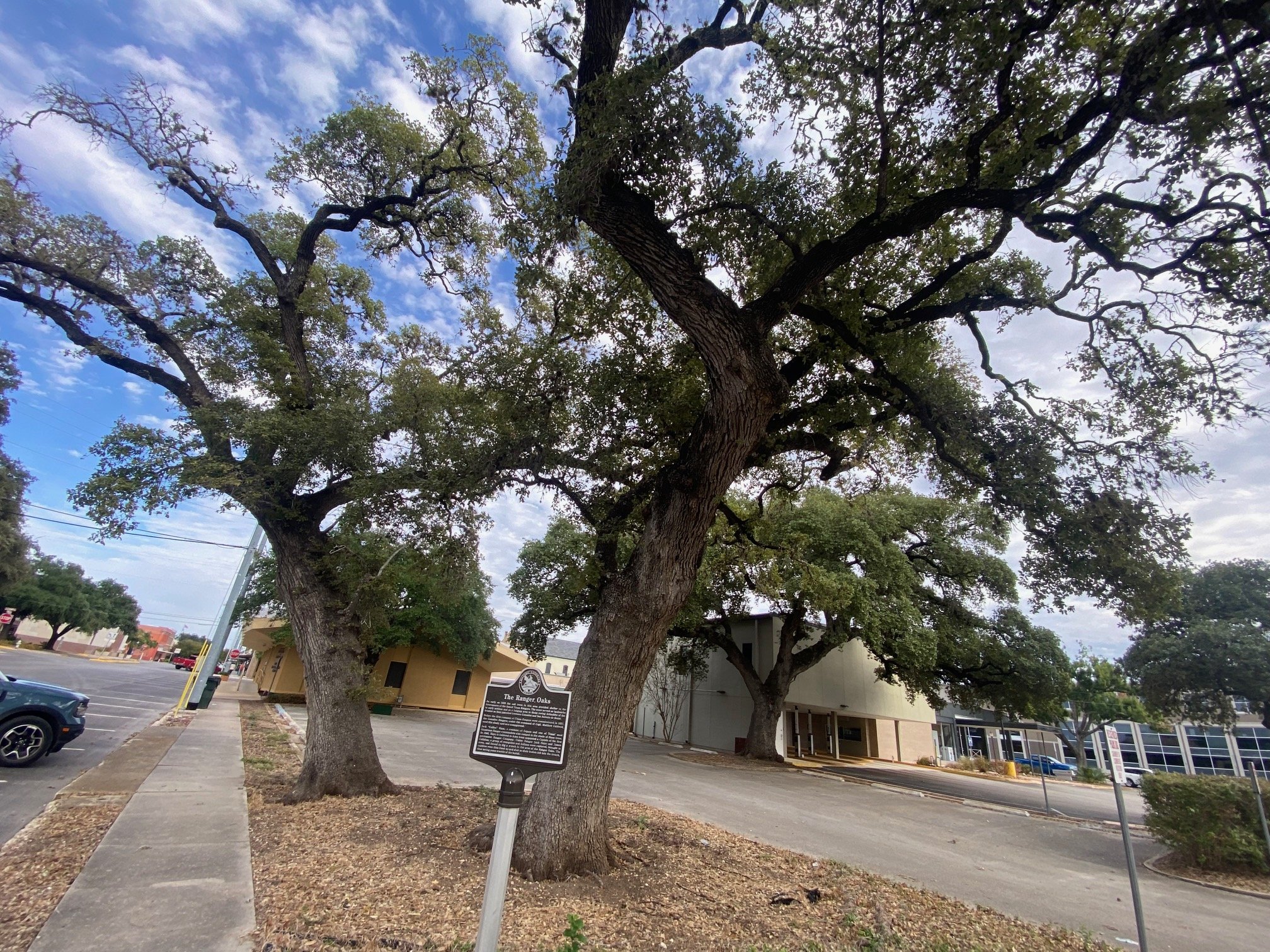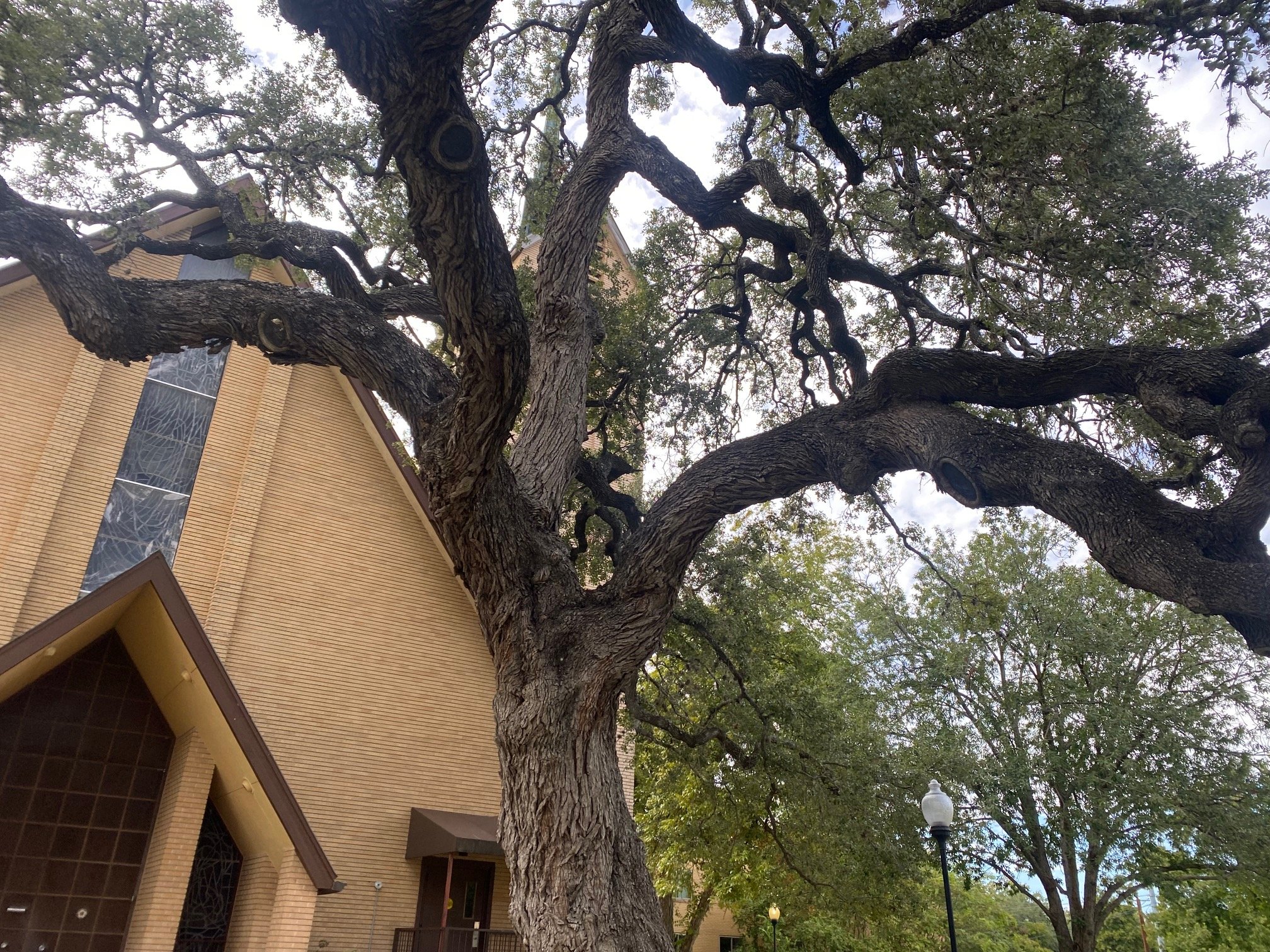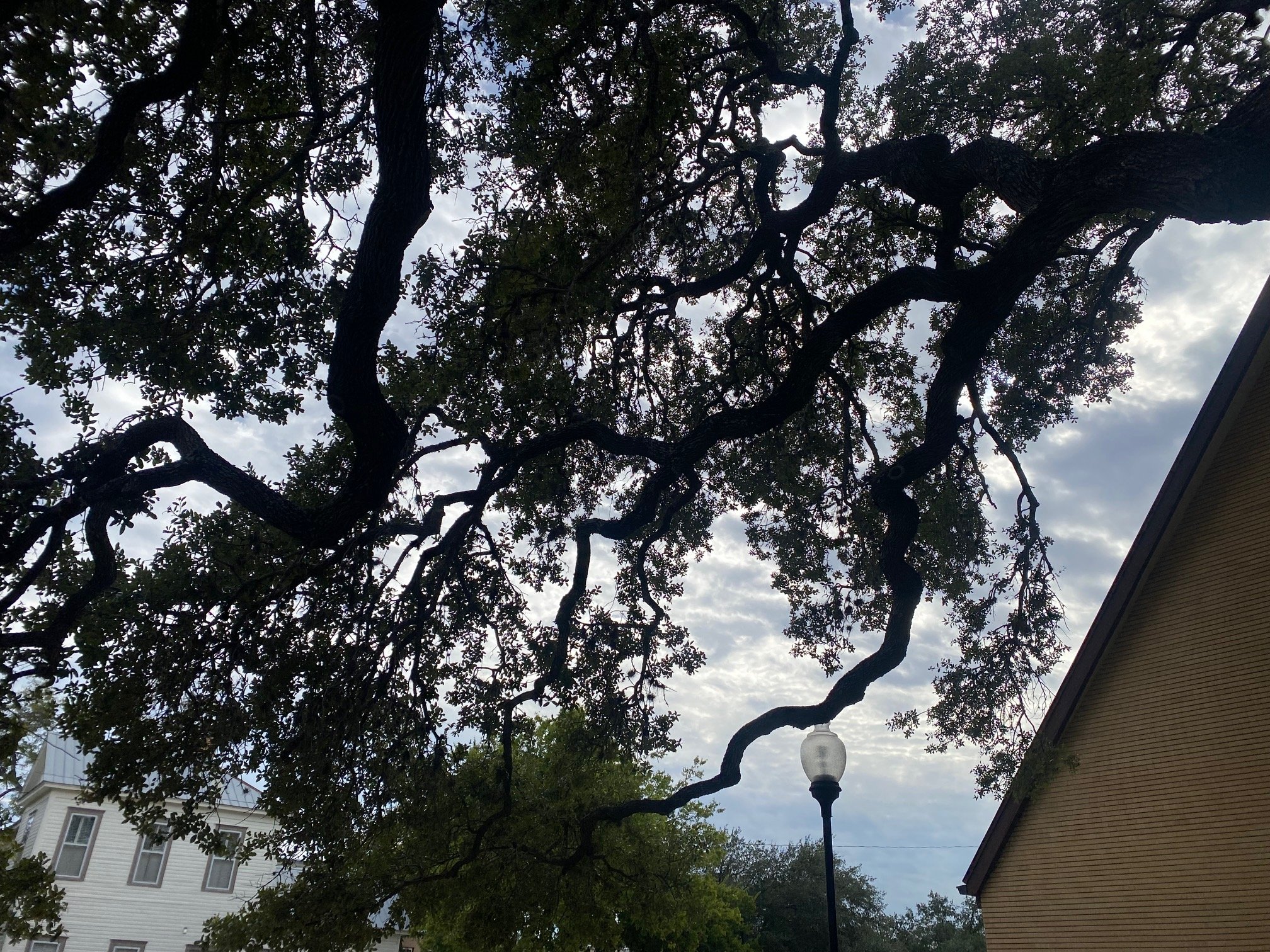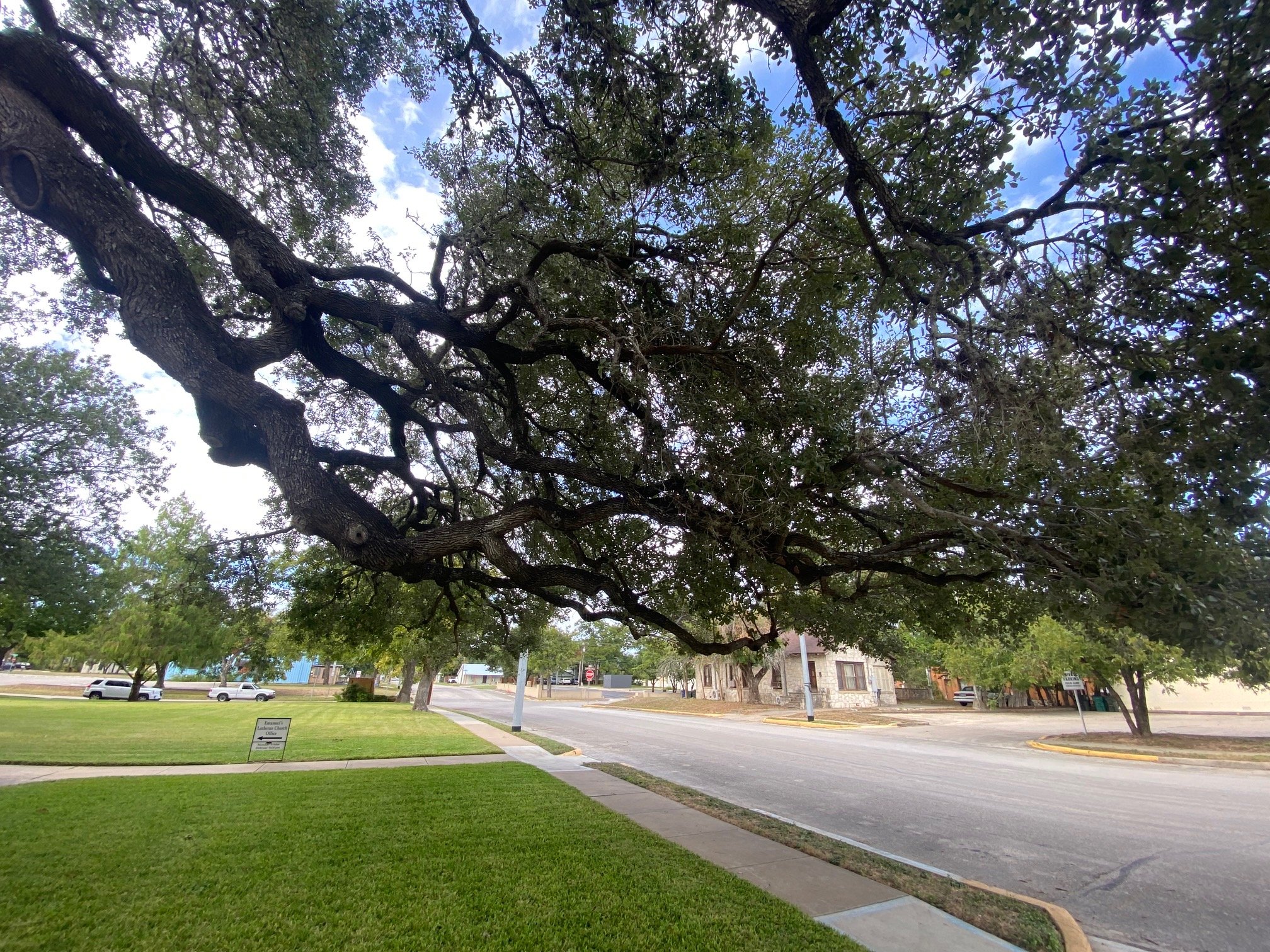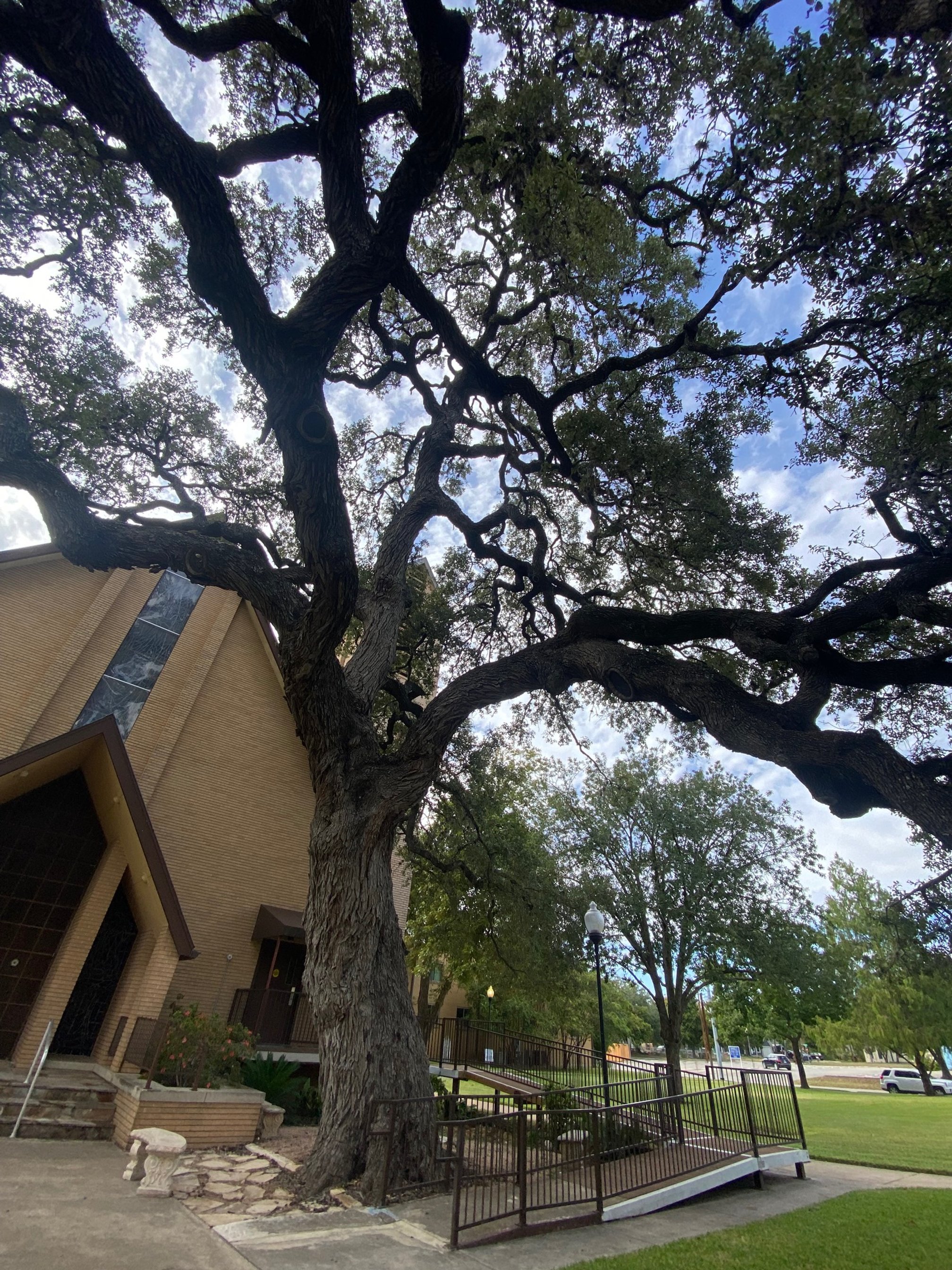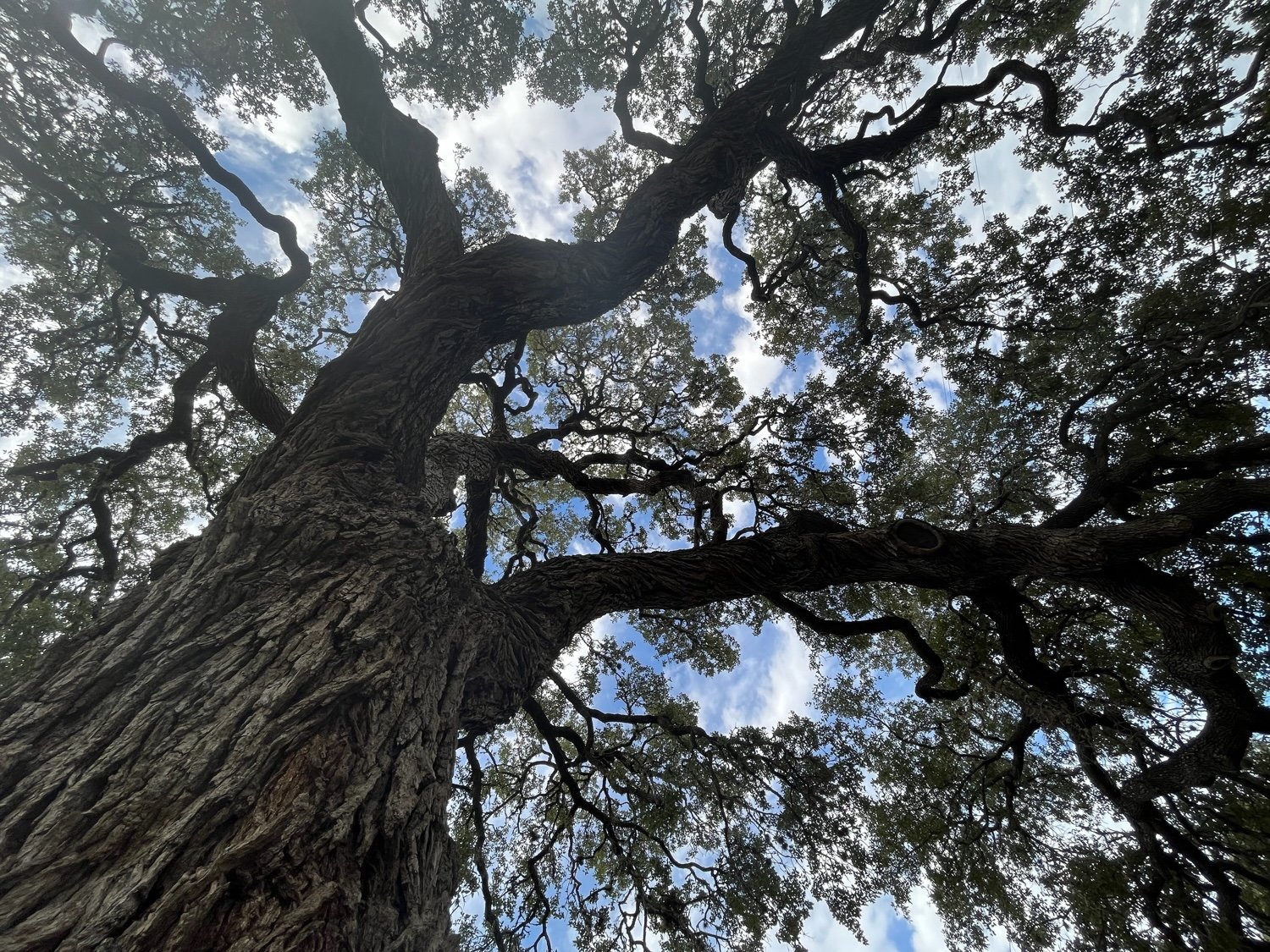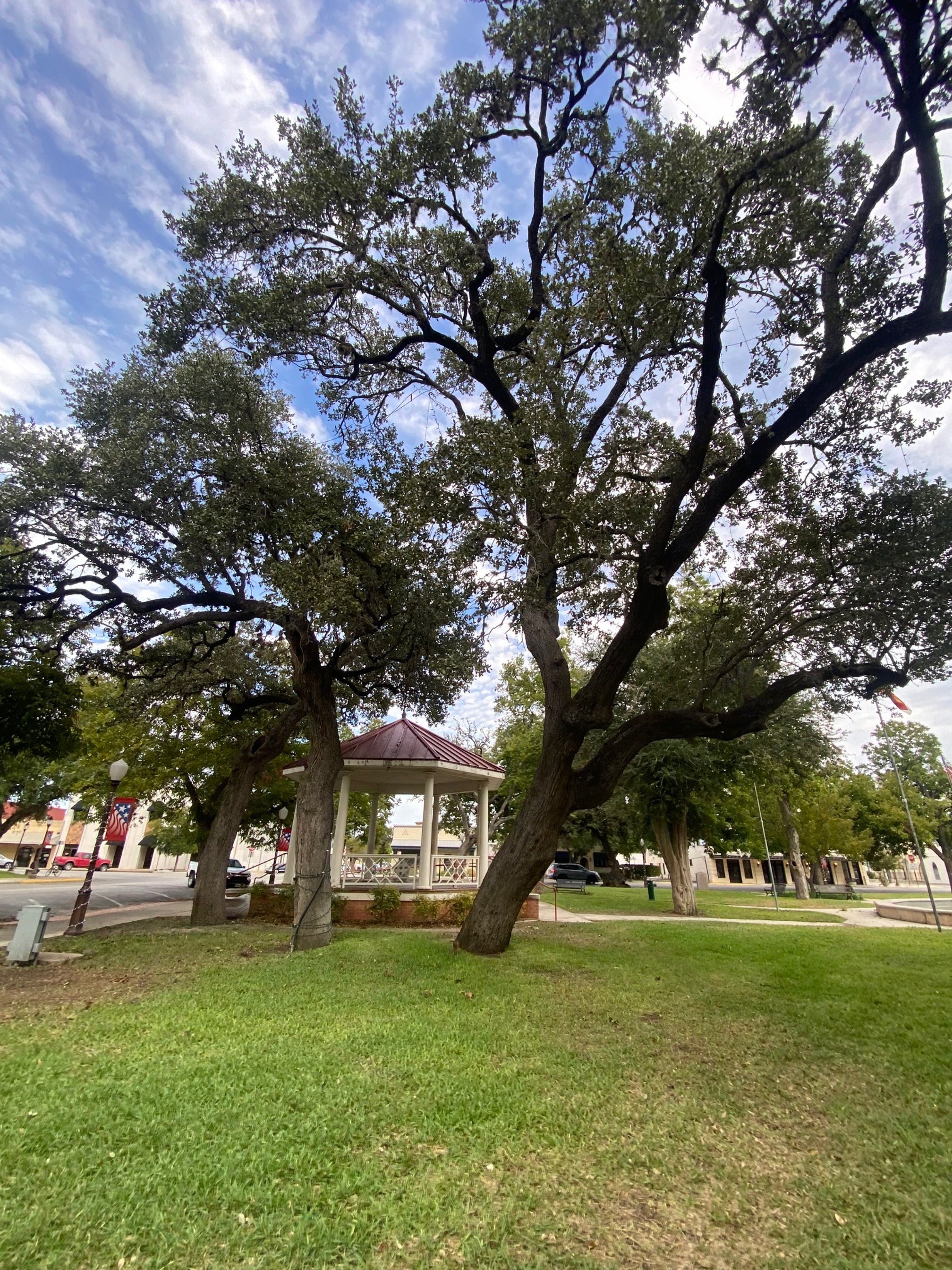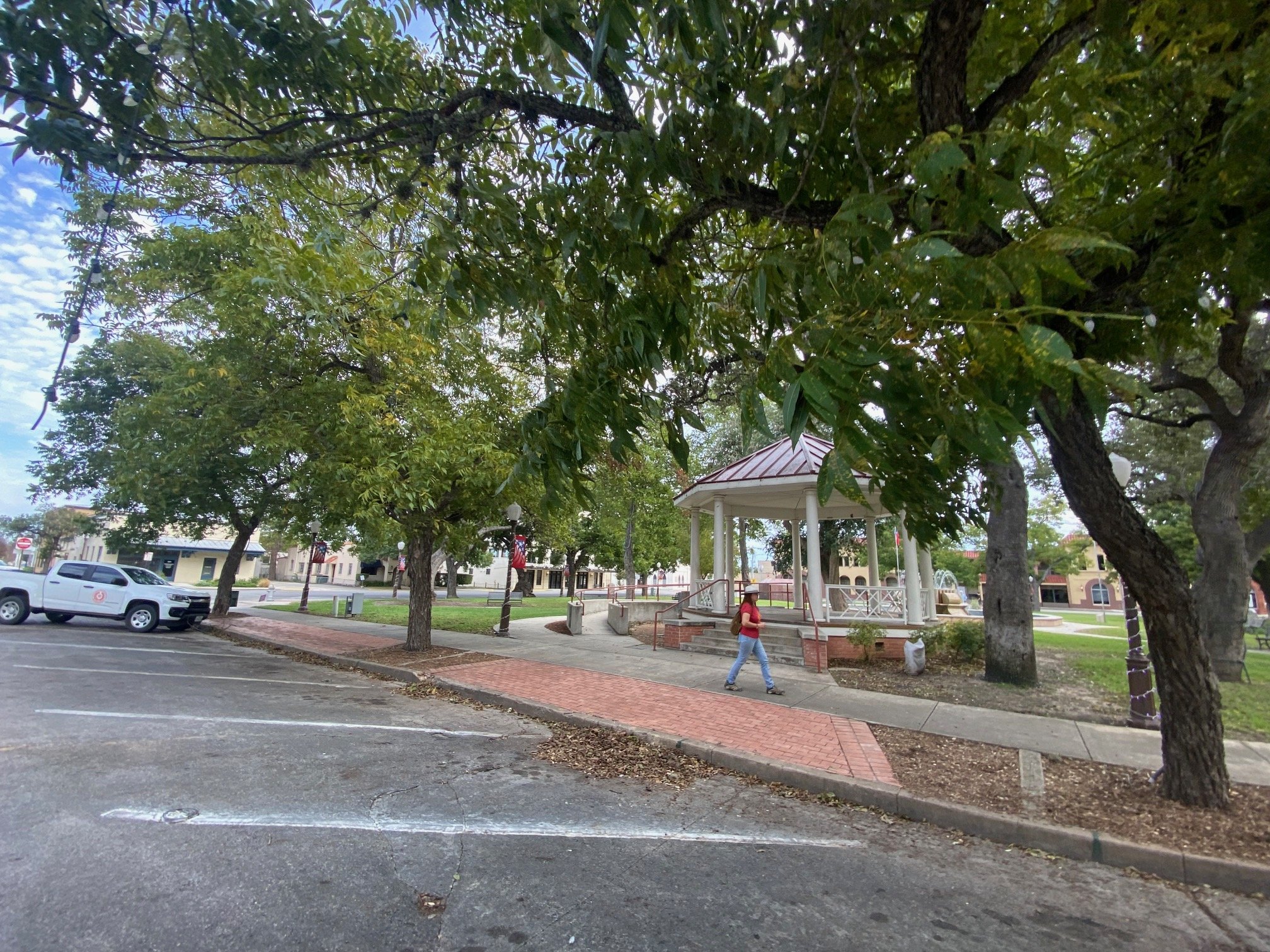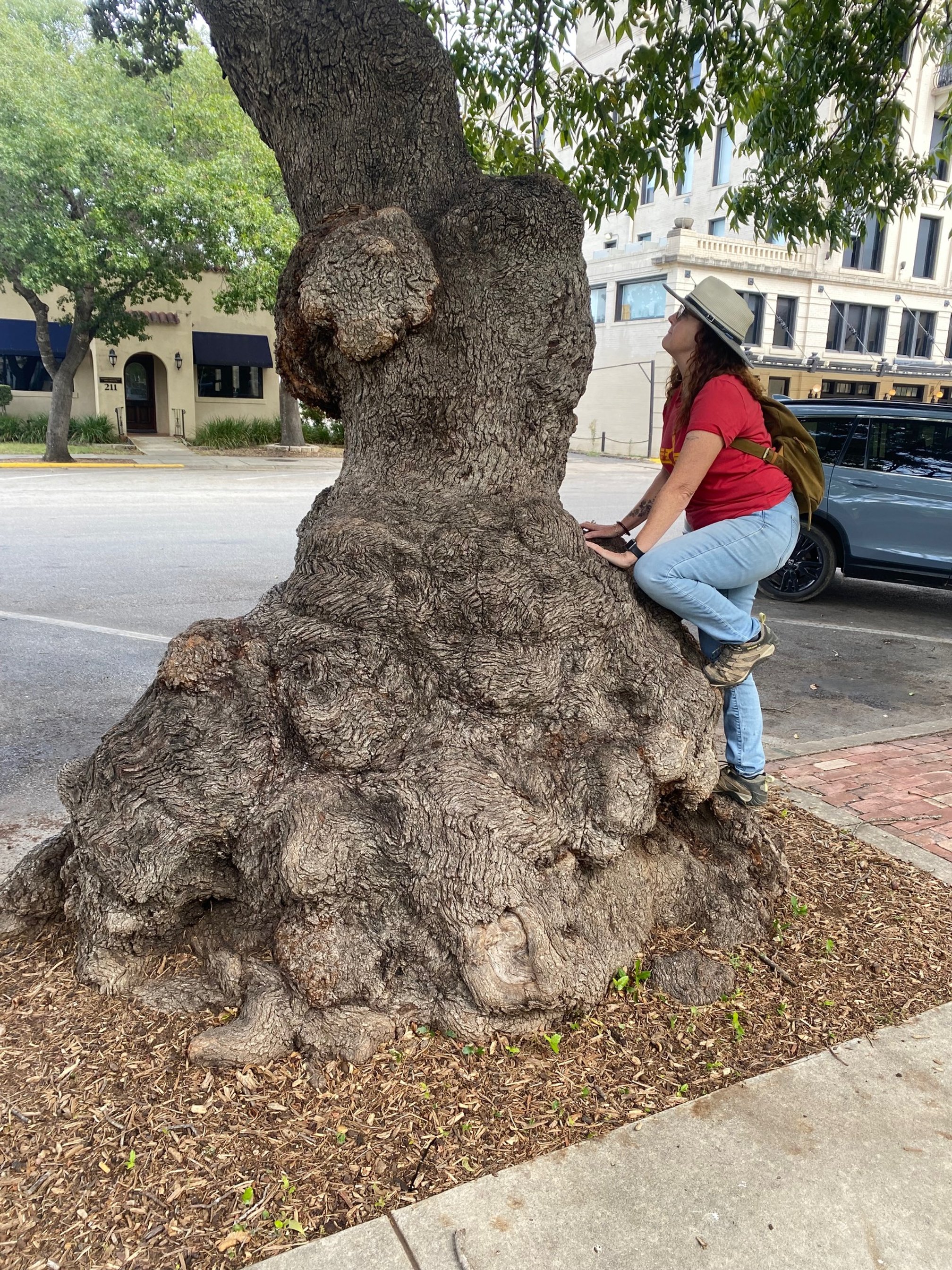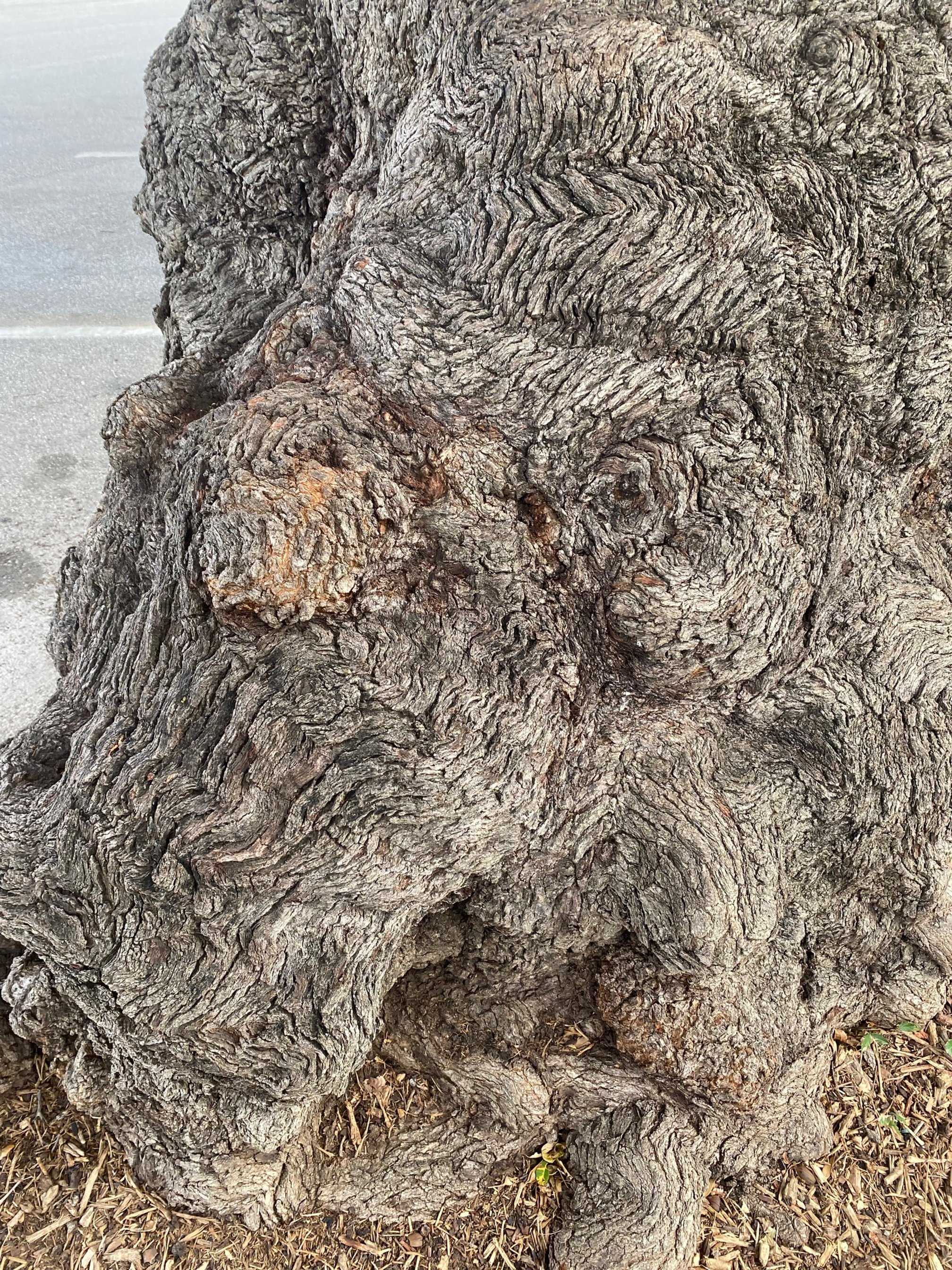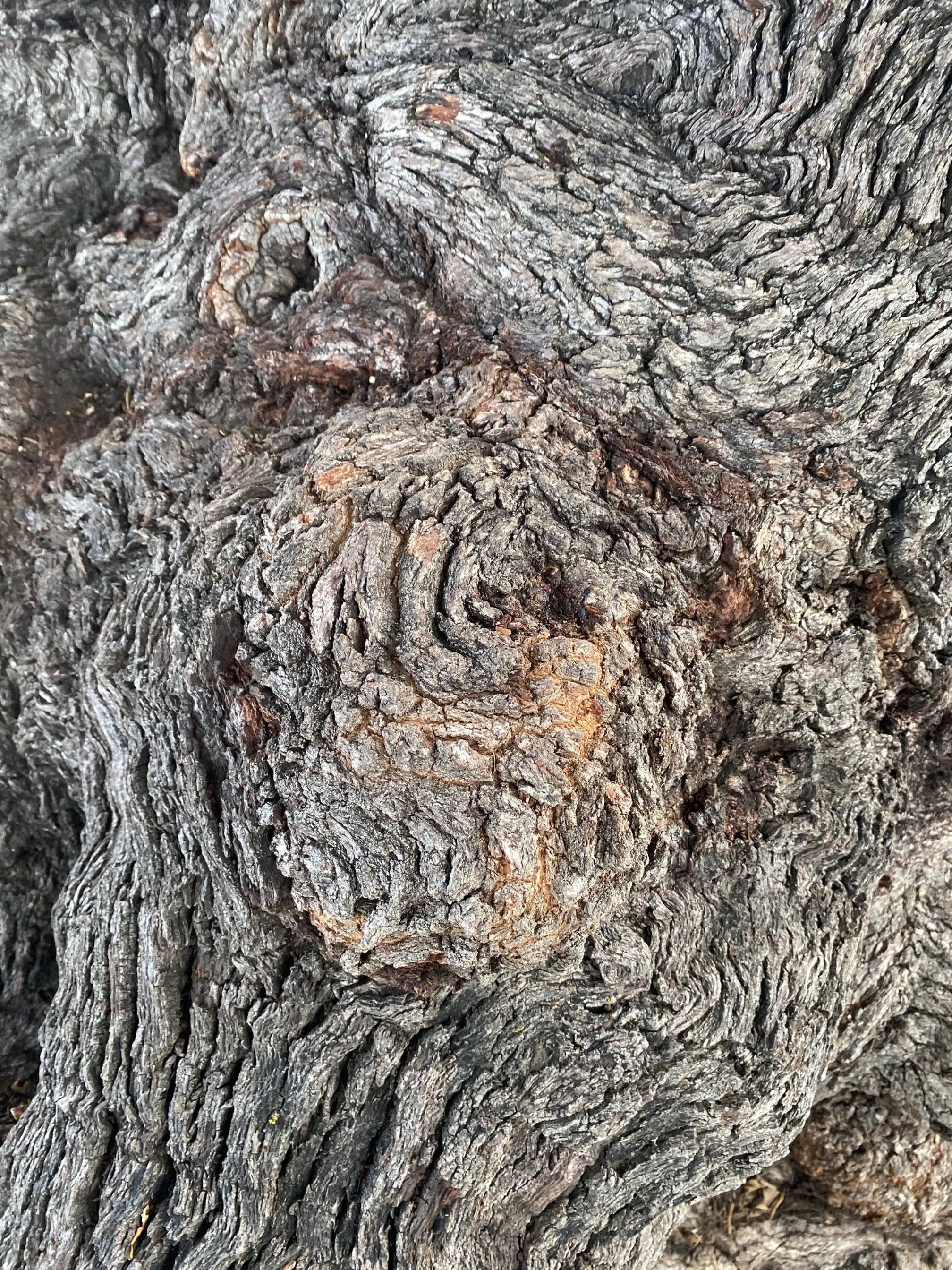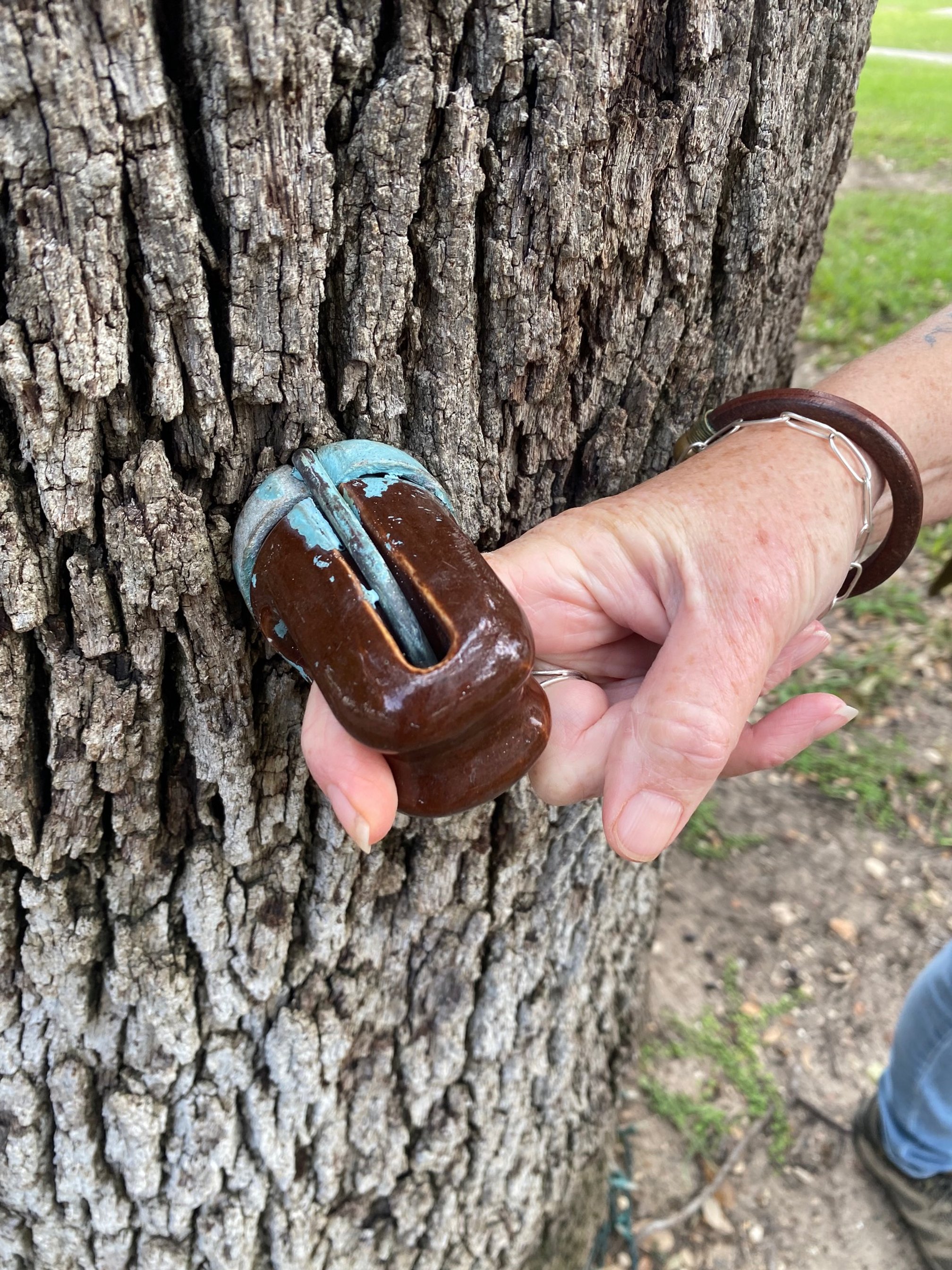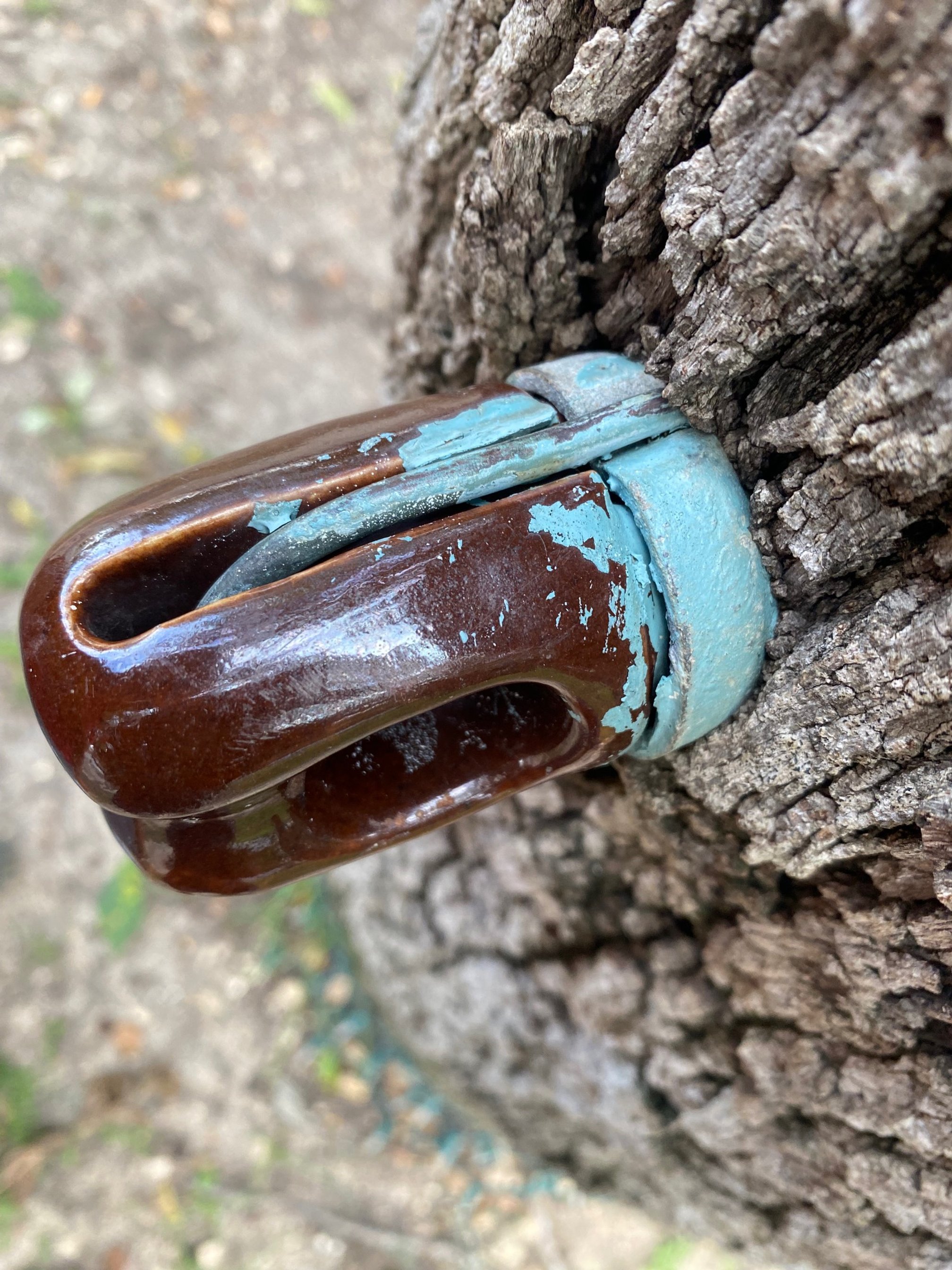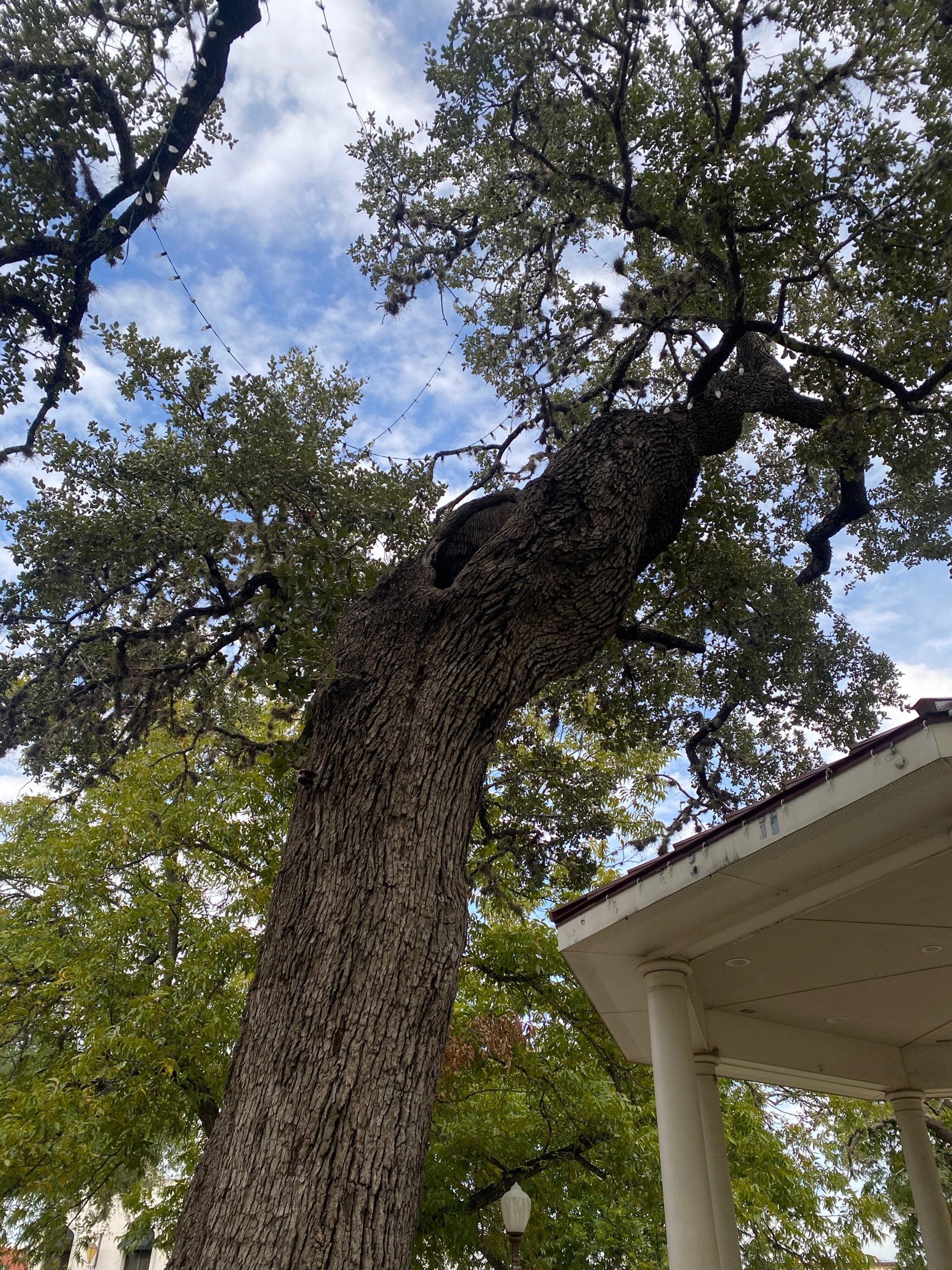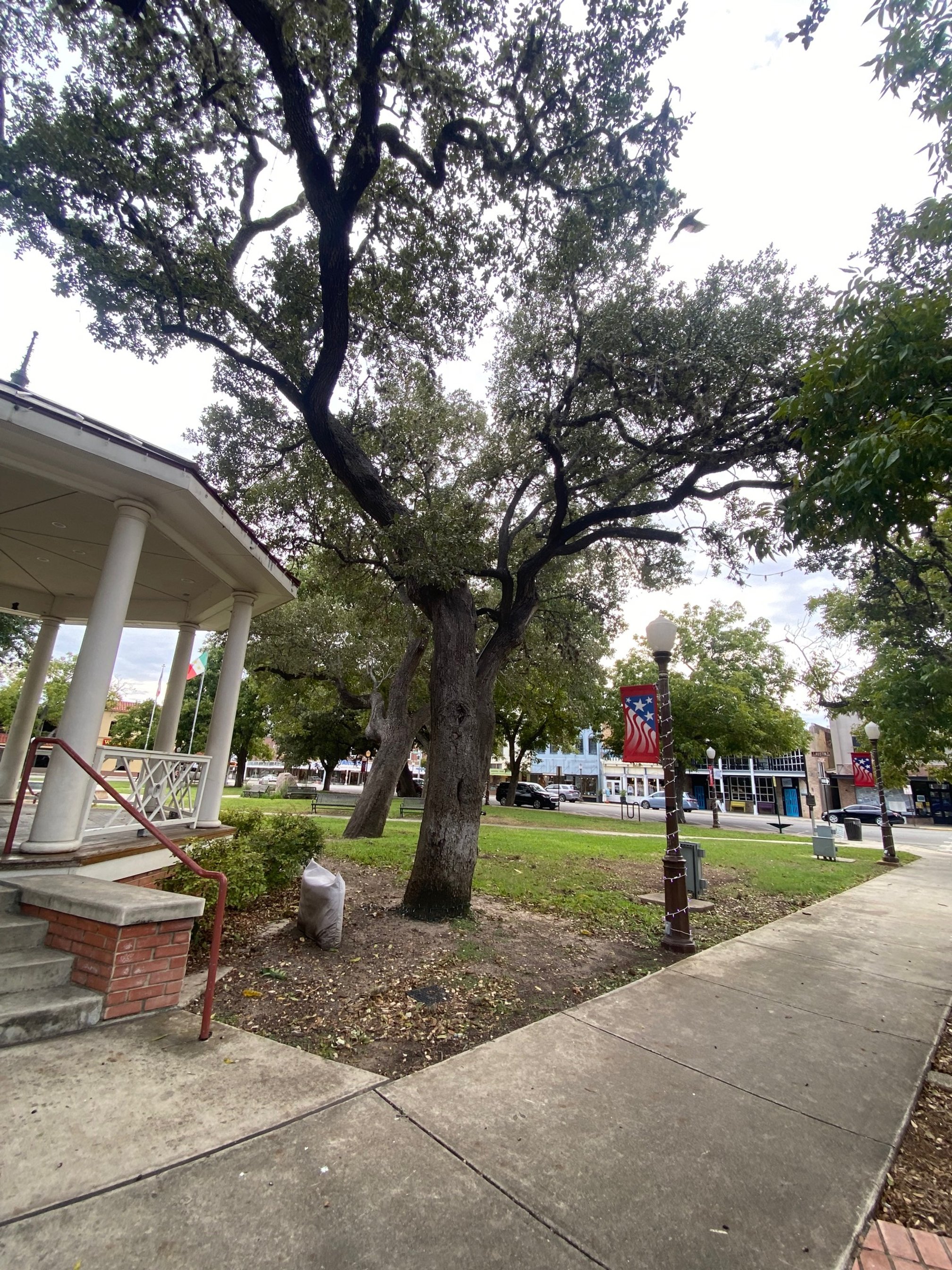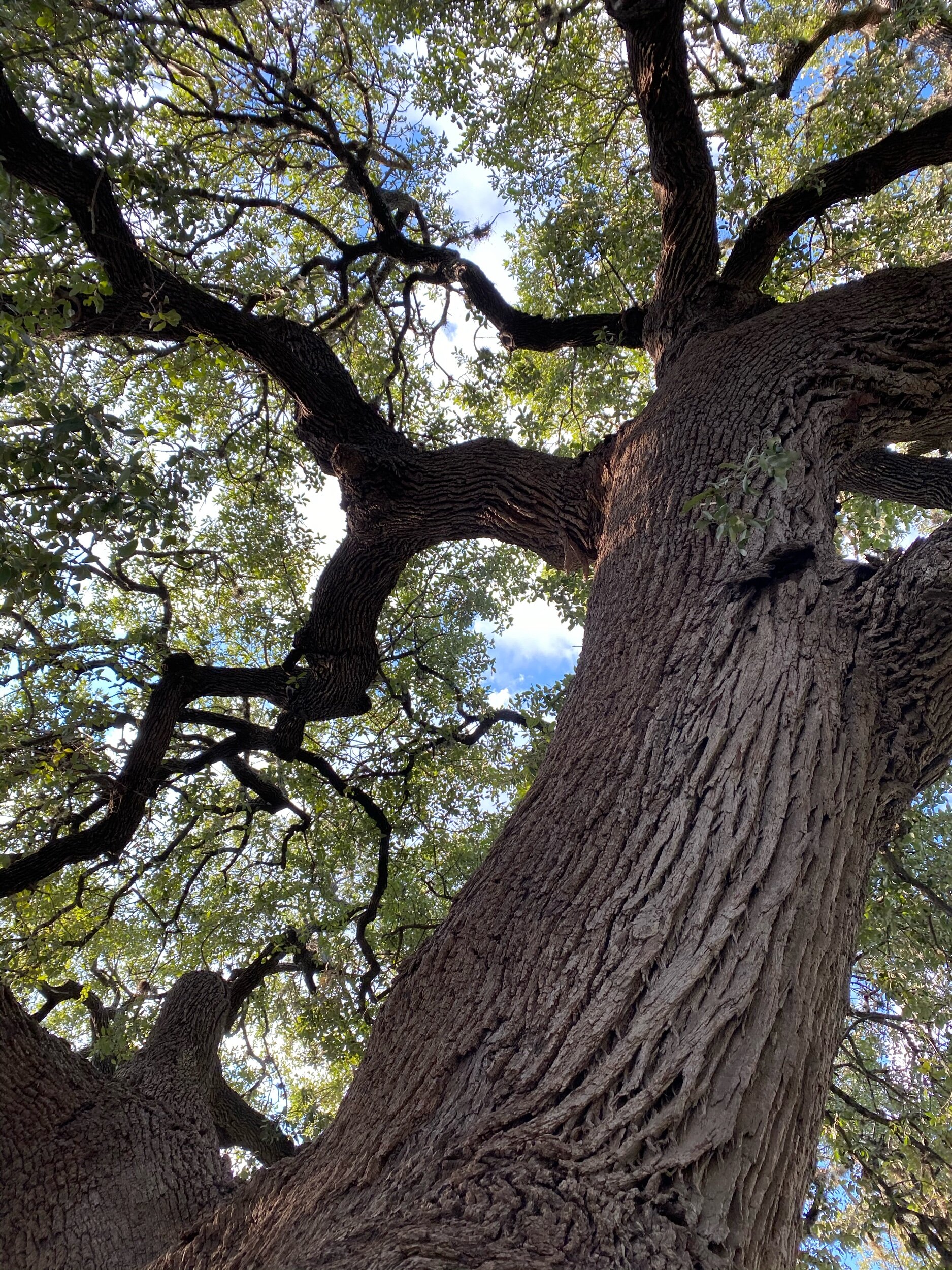
Ranger Oaks
Not gonna lie. When I saw these two scraggly oaks, I was disappointed.
Not gonna lie. When I saw these two scraggly oaks, I was disappointed.
Finding historic oaks that look forgotten, declining, and degraded by municipal structure is downright depressing.
Other notable oak siblings, with their roots squelched into oblong cement shapes, stood in the vicinity on the first cool weekend of October.
Before it was a parking lot…
this area of downtown Seguin was a whole grove of trees under which the Gonzales Rangers — precursor of the Texas Rangers — took shelter circa 1828.
The historical marker describes a disturbing firing line massacre…
of Indians and other “renegades” shot so their bodies fell into the trench they were forced to dig themselves beforehand, which “saved some of the trouble of the burial.”
Great imagery. Thanks
Glad we got that engraved on a sign for posterity.
I’ll go ahead and admit that it didn’t even occur to me
while we were standing there, that the cement and asphalt I was fussing about covers the mass grave that the marker details. Recounted in devastating detail from a different perspective, this article names Ranger James Callahan from the celebratory plaque, which was appallingly placed there as late as 2010.
Looking into it later led me down a rabbit hole which included this podcast about the dark chapters in the history of the Texas Rangers.
On a more uplifting note, an impressive larger specimen caught our eye, catty corner from where we parked, so my friend, former co-worker, Texas Master Naturalist and fellow horticulturist, Sandi and I criss-crossed right on over to the Emmanuel Lutheran campus to get a look.
Now that’s more like it!
THIS is what keeps me driving around Texas: hoping I find a beautiful, mature giant that inspires awe and connects me to something greater than myself.
photo by Sandi Holmes
Who doesn’t LOVE a big ol’ tree with a satisfying trunk you can’t even get your arms around?
I mean, the city of Seguin paved up to the trunks of these old oaks, so… I don’t know
This photo accidentally captured the angle of the oaks shown in the first edition Famous Trees of Texas book
The Ranger Oaks are located at the southeast corner of Gonzales and Travis Streets, in Seguin.
Relevant links
Refusing to Forget is a multifaceted project that seeks to incite public conversations through efforts such as: museum and online exhibits, historical marker unveilings, lectures, and curricular materials for public school teachers. The story of Rangers executing unnamed men who had escaped slavery in March 1839 is linked from their site
Produced by Texas Monthly, the podcast White Hats tells the story of one of Texas’s defining symbols.
McNay Art Museum, in San Antonio has a drawing of oaks in Seguin from 1848
Many thanks to Brenda Biggerstaff-Sanchez for research assistance 🩷
Whipping Oak
Not ever completely sure which was the right tree, this was a mostly clueless stroll around the Guadalupe County courthouse grounds
This confusing jaunt might’ve been less so had I done my homework ahead of time, but that’s not how I roll.
By now, I have saved all the living trees on my google map app, so I rarely bother to look at the book or even the website. GPS coordinates and the brief location info is saved so I just go, frequently stumbling around to find what I’m looking for.
After hunting down the Ranger Oaks, I saw it was a couple blocks to the Guadalupe County courthouse in the same little town of Seguin to find another.
They were all in the same historic grove.
The gleaming limestone courthouse was easy enough to spot, but I had no idea which tree was the Whipping Oak. There were several surrounding a central plaza across the street.
The description said “near the gazebo,” but the unimpressive trees next to it didn’t seem right. We wandered around looking.
This marker was no help, pointing instead to a WPA built fountain project dedicated to the mayor who allocated resources to preserve it.
Happily, we noticed this wonderfully knarled live oak on one end of the plaza and spent a few minutes admiring the swirly, burl-like patterns in the bark.
Did you know that Seguin is home of the Worlds Largest Pecan?
I didn’t and I’m sorry to say that we never wandered around to the other side of the courthouse to find this kitschy gem.
Also interesting that the courthouse seems to have been beautifully power-washed since this 2019 photo I found on Google.
Thanks to Sara Neave!
While noodling around, I had been trying to look up the FToT page on my phone to see if it would lead us to the “right” tree.
Then I hear Sandi, “I FOUND IT.”
Named for the public punishment the tree played a part in, these iron loops provided a hitch for tying up “runaway slaves, thieves, and wife-beaters” before lashing them.
Now the tree itself gets punished: slow strangulation by xmas lights.
The Whipping Oak stands near the gazebo across from the south entrance to the Guadalupe County courthouse.


